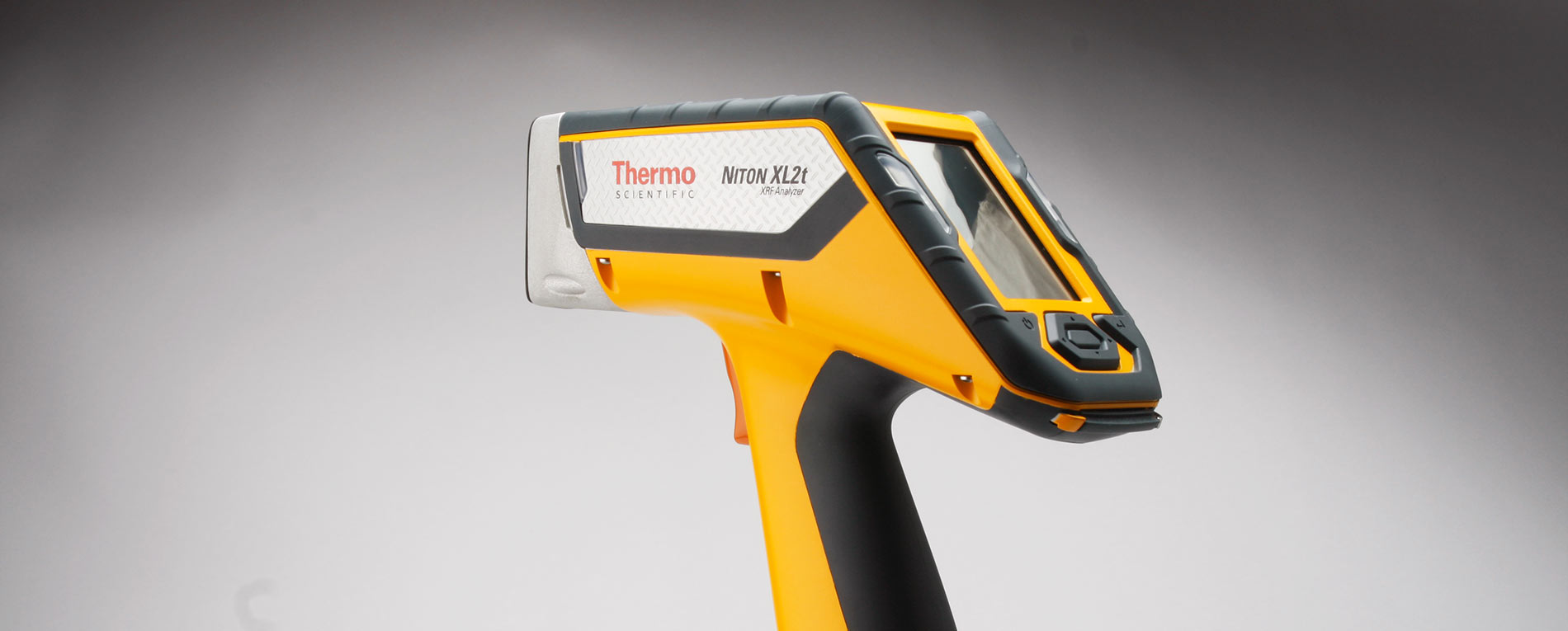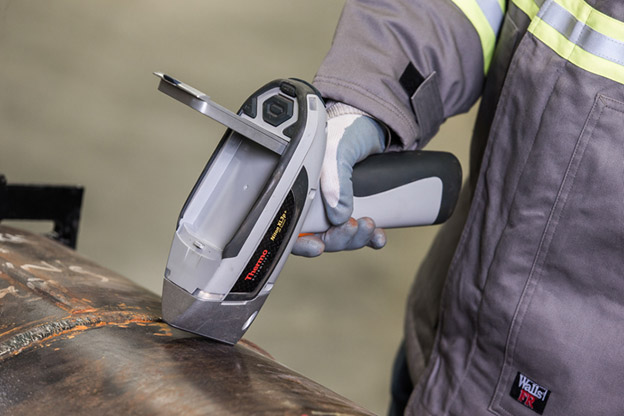PMI Positive Material Identification
PMI (Positive Material Identification) testing is the analysis of materials to determine the chemical composition of a metal or alloy at particular (usually multiple) steps of alloy manufacturing or in-process alloy installation. Knowing the exact composition and grade of an alloy enables suppliers, plant workers, and other responsible parties in the chain of custody of components to match alloy specifications that are chosen for their specific properties such as heat resistance, corrosion resistance, durability, etc. Having the right alloy in the right place is essential in places like petroleum refineries and chemical plants, because the right alloy with the right properties is often all that stands between a safe, efficient operation and lost time and revenue.
A handheld XRF PMI gun can analyze, identify and display grade and composition of a material in less than 5 seconds without creating any marks on the material or destroying the sample in any way.
How XRF Works:
XRF is x-ray fluorescence. Fluorescence means that some energy is produced, is incident upon an object, and then another lower energy is emitted from that object. In the case of x-ray fluorescence, the original energy is produced in the x-ray tube of an XRF instrument. This original energy is an x-ray beam with enough energy to cause electrons to be knocked out of their orbits in the atoms in your stainless steel analysis sample; this is called the primary x-ray beam. The stainless steel sample is the object upon which the primary x-ray beam is incident, and the object then emits another energy that is lower than the energy of the primary x-ray beam. The energy emitted from the sample is a result of an electron losing energy when it moves from a higher orbit to a lower orbit in the atoms in your sample. The electrons change orbits because the energy of the primary x-ray beam is strong enough to knock electrons out of the innermost orbital shells of the atoms in your sample.
When electrons are knocked out of the orbits, this creates a vacancy where the electron used to be. Since these vacancies make the atom unstable, they must immediately be filled with other electrons. The atom can fill these vacancies using electrons from higher orbits, so an electron from an orbital shell further out from the nucleus can move down to fill a vacancy in an orbital shell closer to the nucleus. When this happens, the electron loses some energy; this energy is the fluorescent energy and it is detected by the detector in the XRF instrument. Since each element has a unique set of fluorescent energies, the instrument can determine what elements are present in the sample, as well as how much. The instrument now knows the elemental composition of your stainless steel sample, and it can reference this composition against an on-board library of known alloy grade compositions and tell you what grade of stainless steel you have. For example, if the result shows 17% Cr, 12% Ni, and 2% Mo, this is 316 SS, and the XRF alloy tested will identify it as such.



WRITE TO US
Quality Network Pvt Ltd.
Works
No. 10, II Cross Street, Kalaimagal Nagar,
Ekkattuthangal, Chennai - 600032
CONTACT US
Registered Address
#38/GA, Shoreham, 5th Avenue, Besant Nagar,
Chennai – 600 090
CONTACT DETAILS
Phone: +91 44 3551 0355